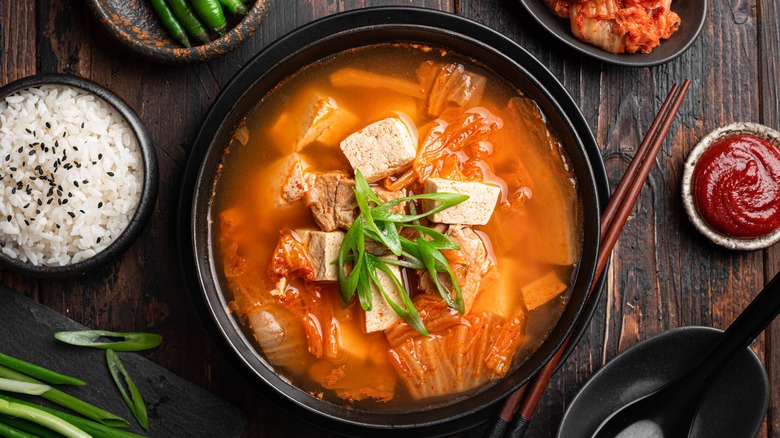The Go-To Ingredient You Need For Homemade Korean Food
We may receive a commission on purchases made from links.
Korean food is becoming increasingly popular in the U.S., and many people seek out local Korean grocery stores to buy ingredients and try out Korean recipes. One versatile ingredient called Yondu can come in handy for all Korean cooking and may inspire you to make even the Korean dishes you never heard of.
Mashed learned about Yondu when speaking to Korean food experts Danny Kim and chef Jae Lee at Walmart's bettergoods launch. Kim is a food creator, and chef Lee is the owner of the East Village Korean restaurant, Nowon. Yondu is always on hand in their kitchens. "When we make stews and soups, we use a product called Yondu at home. It's like a vegetable extract and it adds umami to the dish without adding artificial ingredients," Lee explained. Yondu is vegetarian, organic, and has simple ingredients. It's made from the essence of fermented soybeans, vegetable stock, and yeast extract for a combined savory flavor with plenty of dimension. Kim called it a "umami flavor booster."
The versatility of Yondu
For those attempting to cook any Korean dish at home, Yondu is an effortless way to add flavor. Although Yondu's use extends to every corner of Korean cooking, soups and stews, like chef Jae Lee suggested, are a major target of Yondu. A dash of Yondu can go far in kimchi stew, budae jjigae (army stew), and seaweed soup, or miyeokguk. It can be added to broth at the beginning of the cooking process, or used to season for taste at the end.
Yondu also works wonders on sauces, both light and rich. Try adding a dash of it to your spicy tteokbeokki, mix it into the savory sauce of dubu jorim (braised tofu), or let it add flavor to a kimchi fried rice. Only 1 or 2 teaspoons of this powerful seasoning can make a significant impact on a dish, so use it sparingly. We also asked Lee and Danny Kim if Yondu's use extends beyond Korean cuisine. Lee noted that "you can use [Yondu] in any sauces," implying it has that ubiquitous umami versatility. Try it out in salad dressings, pasta sauce, and dips.

